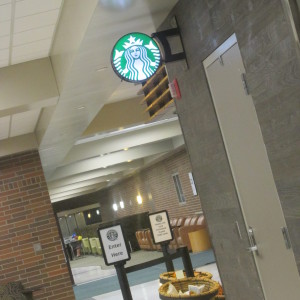When was the last time you, a teenager, bragged to all of your friends about the last amazing, delicious, tall glass of water you had? Think about it. I know I haven’t. We do discuss the best pops, energy drinks, and caffeine-filled drinks at Starbucks. Ah, yes. Starbucks. The place where you can stand in line for over 10 minutes for a $6 drink. We all can’t help but love ordering Starbucks because it sounds so cool. “Good morning. May I have a grande caramel macchiato with milk, extra caramel, whipped cream, caramel drizzle and a double shot of espresso?”
Victoria Williams loves doing just that. “The fact that I can order a whole lot of things in my Starbucks frap’ while sounding fancy, but know what I’m talking about feels so cool,” Williams said. Although it sounds “cool,” what does all of this do to today’s youth? According to calorielab.com, the more “fancy” your drink gets, obviously the more calories the drink contains — and we don’t like plain things.
Thirty different students at MIPA were asked how “addicted” they felt they were to caffeine. Forty percent admitted that they don’t think they could go a whole day without coffee, pop or an energy drink and know that this is an addiction. A few even joked about how “Starbucks is life.” (Teens and Caffeine)
“After drinking things like Starbucks, I feel like I need more. It’s just so addicting,” Chante’ Campbell said. Many students such as Chante’ said they don’t get hyper or more energized from caffeine-filled drinks, which causes them to drink more, therefore creating a dangerous caffeine addiction. According to the American Dietetic Association, when it comes to teenagers drinking caffeinated drinks, the number has tripled since the 1970s.

It’s breakfast-time, and you were up until 4 a.m. doing homework. You most likely won’t make it through the day without a boost. Starbucks or an energy drink very well may do just that. Most teens probably don’t think about the 330 mg grande coffee they’re about to take in. The American Academy of Pediatrics recommends that adolescents not have more than a 100 mg intake of caffeine a day.
There isn’t much we can do — caffeine keeps us going. Try to consider intake when you consume hundreds of milligrams of caffeine a day. Are you willing to make a change? How does caffeine affect you? Do you feel like you’re addicted?

Thank you for writing this piece! I personally struggle with caffeine and I have tried everything to stop, but nothing helped. I then tried to cut down on the intake and I no longer got migraines without it. Teenagers really need to slow down on the consumption of coffee and energy drinks, not completely stop.
This article really takes your target reader and hits it. As a fellow MIPA student, I’m aware of the coffee craving during camp and it’s a shame that the building I’m in doesn’t have a Starbucks. I didn’t know that my grande coffee that I usually order has 330 mg of caffeine and I’m only supposed to have 100 mg of caffeine per day. A larger sample would’ve been nicer to have but otherwise, the inclusion of the hyperlinks was great.
As a caffeine addict, this was nice to read that I’m not the only one that can’t properly wake up without 4 cups of coffee. I also really like how well researched this is and the use of statistics to back up your point. Nice job!
Waiting in 10 minute lines for needlessly complicated over priced drinks is my favorite hobby and worst habit. Teens have a reliance on caffeine and a serious lack of understanding of the effects of it. Thank you so much for bring an over looked issue to MPIA participants attention!